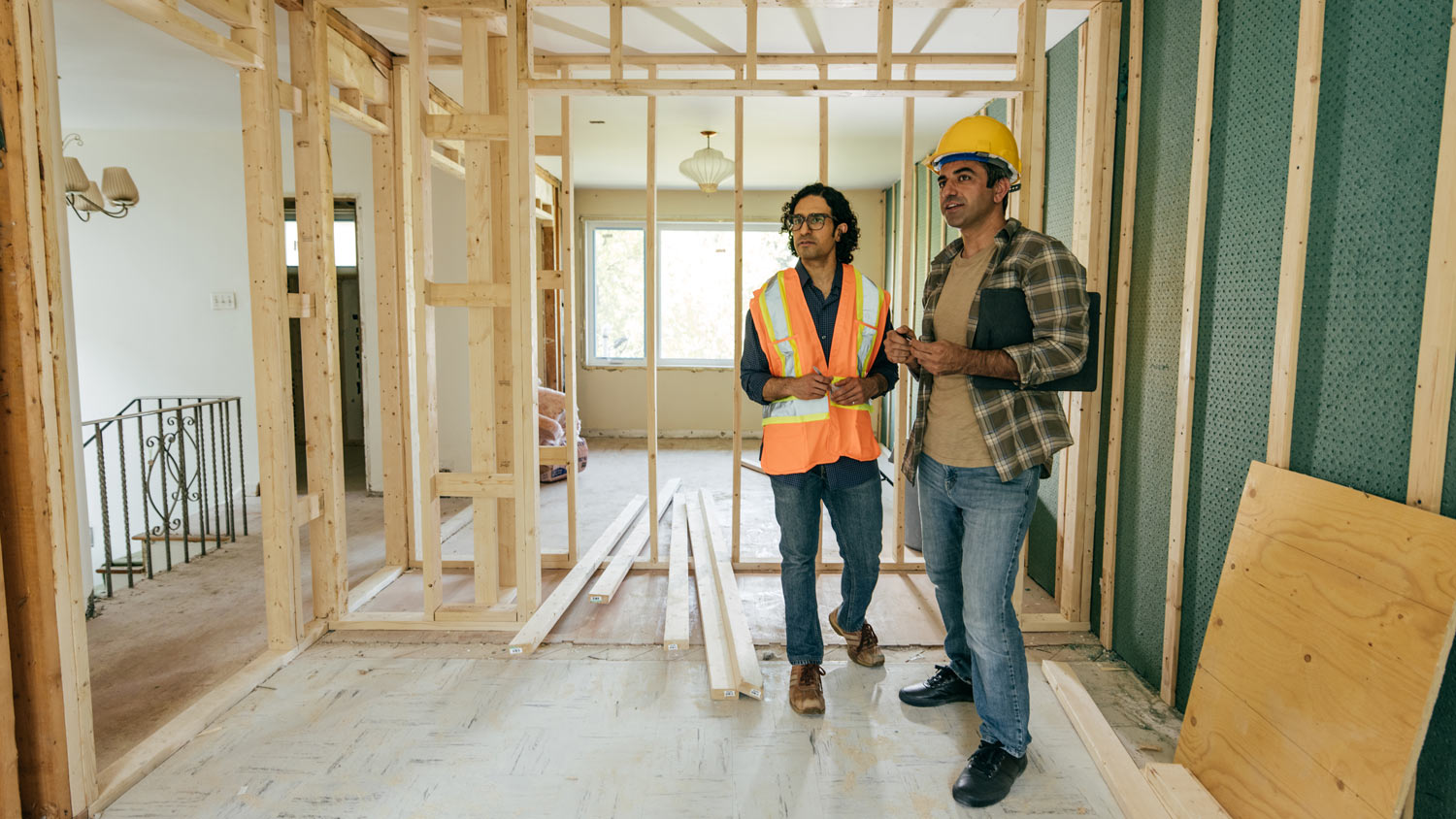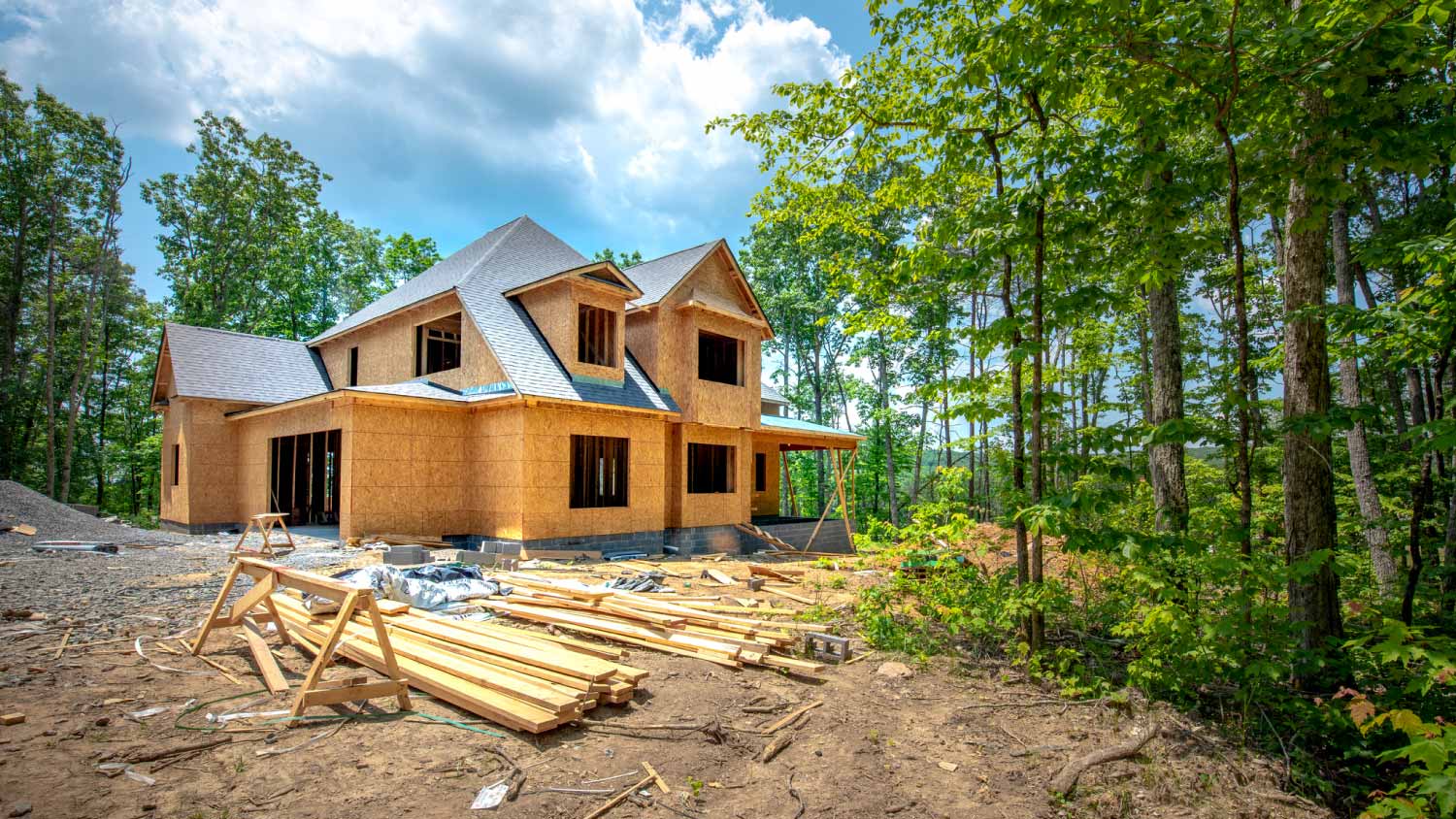
The cost to build a root cellar depends on size, location, materials, and other variables. Our guide will help you decide which option is best for you.
Look down before going up


Your home may require foundation reinforcement before adding a second story.
There are several methods of strengthening your home's foundation.
Foundation reinforcement costs between $5,000 and $20,000.
The work of a structural engineer is necessary for adding a second-story addition
If you're planning a home addition but the only viable direction to build is up, meeting the foundation requirements for adding a second story can be a significant part of the project. However, that's not to say you have to change your plans. Knowing what's necessary to complete the project before starting can eliminate many major surprises.
Adding a second story to a single-story home is a large remodeling project with a number of inconveniences, costs, and potential surprises to consider before jumping in. However, the project can also be valuable. That said, adding a second story isn't a good DIY project, and you'll want to hire a qualified home addition company near you for most, if not all, of the journey.
Before committing to the project, consider the following factors and options:
Adding a second story isn't automatically less expensive than enlarging the footprint of your home for an addition. Much of the determination will come down to the condition of the existing foundation.
The new space will need additional mechanicals such as HVAC and electrical, which may mean upgrading or replacing the existing systems.
Adding rooms above with plumbing needs, like a bathroom or laundry, will cost more than adding waterless room additions.
Reinforcement of the first story, if necessary, can be significant and intrusive.
You'll likely want to find an alternate place to live during much of the demolition and construction phases.
You may need to spend significant money to reinforce or otherwise alter your home's foundation.

While precise foundation requirements for a single-story home versus a two-plus-story home vary widely depending on the geographic location, soil types, and home style, the basic rule is that the structure beneath the home must be robust enough to carry the house's weight and protect it from shifting.
As part of your home renovation contract with your remodeler, the builder must determine the soil conditions and the condition of your existing foundation to receive a building permit for the project. Making these determinations and developing a plan to reinforce the soil and foundation, if necessary, is typically the work of a local structural engineer. Most often, your contractor will have one they work with for these kinds of projects.
In some cases, your home's foundation and surrounding soil may work just as it is to support the additional weight of a second story. This is sometimes true in newer homes but seldom in older ones. Generally, if the existing footings and foundation are deep and bulky enough and don't show signs of frost heave, such as cracking or shifting, it's likely a good candidate for a second-story addition without concern.
If the determination is that your home's foundation or surrounding soil needs additional strength, there are several options depending on the current situation. Your project may require one or more of the following procedures:
Inject concrete grout into the soil surrounding the foundation to strengthen the ground that supports the structure.
Repair the foundation if the existing structure suffers from cracks, frost heave, or deterioration.
Dig below the existing foundation to add concrete mass, footings, pilings, or structural beams. Your contractor will refer to these methods as underpinning.
Without needing foundation work, the cost to add a second story to your home averages $100 to $300 per square foot of additional space. If your home's foundation shows signs of shifting, cracking, or sinking, expect foundation repair costs of between $2,160 and $7,780 before work can begin on the addition.
If you discover that your foundation needs underpinning or other substantial work to support your new second story, expect to add at least $5,000 and up to $20,000 in severe cases to the project's cost.
Custom Paint Jobs LLC made our home feel warm and inviting. Their expertise is evident.
We needed windows in our home, and we couldnt believe we got our entire home done for under $14,000. We have a lot of windows, and not only was it affordable, but it got done in a timely manner! Thanks guys, I truly appreciate you all!
They would not come out because I live on the 9th floor and they do not work on multi floored buildings.
All around they have done a really great job. I have used JL Landscapes for the past 8 years. I own and operate my own commercial/residential real estate company where we own, operate, and maintain our own properties. JL Landscapes has been our exclusive landscaper for both our business...
Donny was punctual, professional, and very fair. Would use them again and recommend to other home owners I know.
Julie came to my home several times and assisted in organizing my files and home office. She knew where things I no longer needed could be recycled or sent for reuse. Julie was able to assist me in deciding to get rid of items no longer being used and things to consider when making the...
We had to replace rotten wood on both buildings and shingle the sides of our dormer walls on the main building. Prior to replacing the roofs we had to tear down a deteriorating chimney to the roofline and Muth and Co worked with our hired chimney vendor to complete the project. While...
The exterminating company sends a knowledgeable person over to the building if the tenants have seen some bugs or pests and they take care of it. They are very good. They are very responsive. They do quality work and their price isn't bad. They come at the time they say they will. The...
From average costs to expert advice, get all the answers you need to get your job done.

The cost to build a root cellar depends on size, location, materials, and other variables. Our guide will help you decide which option is best for you.

If home is where the barn is, a barndominium may be the dream house you’ve been looking for. Here are all the details you need to know about barndominium costs.

Use our home demolition cost calculator to estimate your project’s price and learn what factors impact the total cost before you start your demolition.

Discover the cost to build a modern-style home, including average prices, key factors, and tips to help you plan your project with confidence.

Dreaming of a custom home but not sure where to start? Use this guide on building a custom home to stay organized and ensure you have all your bases covered.

From early blueprints to the final coat of paint, how long does it take to build a house? Let's walk through what to expect from the home-building timeline.